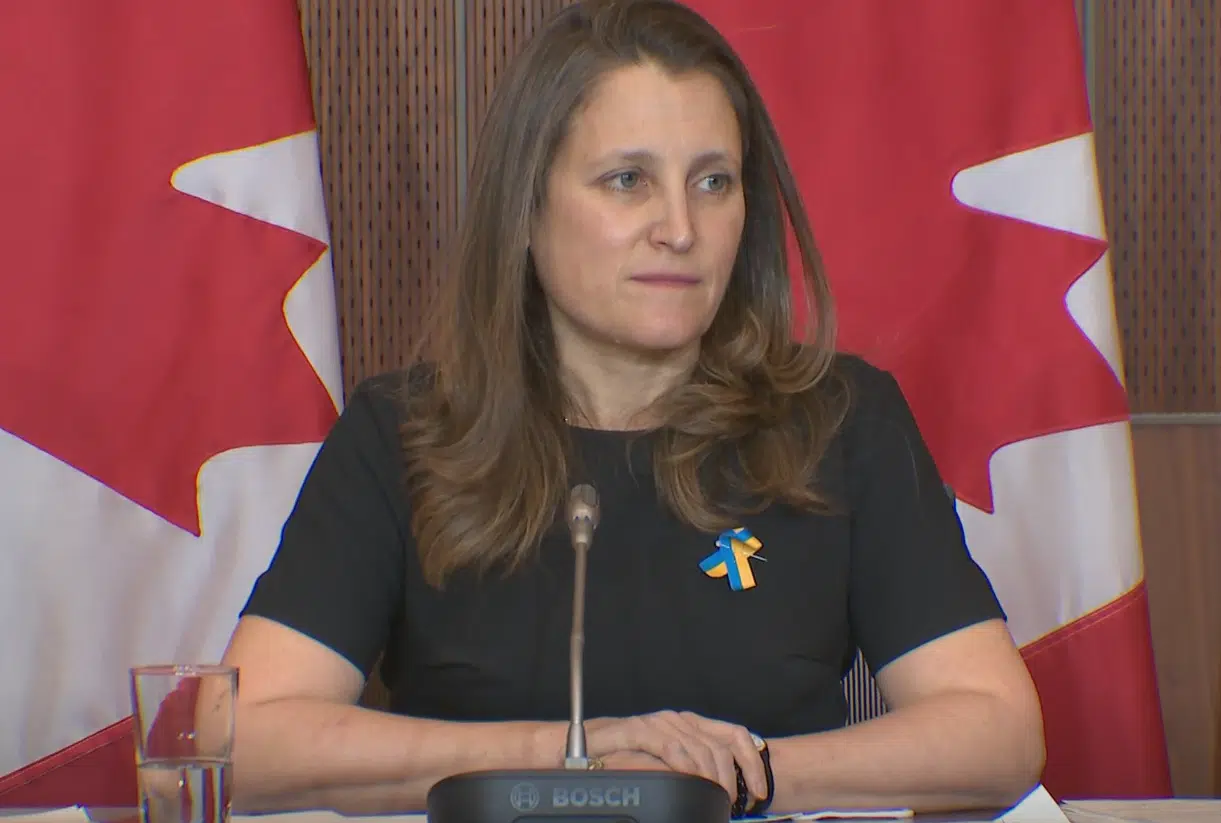The federal government will continue deficit spending, albeit half of last year’s whopping $113.8 billion deficit.
Chrystia Freeland, Deputy Prime Minister and Minister of Finance, tabled Budget 2022: A Plan to Grow Our Economy and Make Life More Affordable in the House of Commons Thursday afternoon.
It projects deficits for the next five years, starting with a $52.8 billion this year, then $39.9 billion, $27.8 billion, $18.6 billion, and finally $8.4 billion in 2026.
Freeland says it’s a commitment to a slow recovery from the pandemic, including the heavy government spending on social programs and health measures designed to combat the impacts of COVID-19.
“Budget 2022 is about growing our economy, creating good jobs, and building a Canada where nobody gets left behind,” she says. “It is going to mean more homes and good-paying jobs for Canadians; cleaner air and cleaner water for our children; and a stronger and more resilient economy for years to come.”
National dental care program announced
The budget also includes a new national dental care plan, part of a deal the Liberals brokered with the NDP in ensure the minority government could stay in power until 2025.
The plan is set to cost $5.3 billion over five years, and will give free dental care to families with a household income less than $90,000 a year, with no co-pays for those under $70,000 a year.
The program is rolling out in phases, starting with kids under 12 in 2022, expanding to teens under 18, seniors, and people with disabilities in 2023, and to everyone living in the country by 2025.
Bank taxes
A substantial tax on banks and insurance companies.
A one time Canada Recovery Dividend, a 15 per cent tax on corporate bank and life insurer’s groups income above $1 billion.
The budget says it’s to support the broader county’s recovery.
There will also be a permanent 1.5 per cent increase of the corporate income tax rate for banking and life insurance groups on income above $100 million.
Strategic objectives
Budget 2022’s strategic objectives, according to the Finance Minister, are broken down into three main categories:
- Investing in Canadians and Making Life More Affordable; including a commitment to double housing construction over the next decade, help first time home buyers, ban foreign property investment, and curb unfair housing practices.
- Investing in Economic Growth and Innovation; creating a Canada Growth Fund to attract private investment in Canadian industries, creating a new innovation and investment agency, a $3.8 billion Critical Minerals Strategy, a small business tax cut, and intellectual property protections.
- Investing in a Clean Economy; new clean and carbon capture technology development incentives, purchase incentives for zero-emission vehicles, expanding the nationwide network of electric vehicle charging stations, and new investments in clean energy.




